#CAD integration
Explore tagged Tumblr posts
Text
HP SitePrint Launches in Australia to Boost Construction Industry Productivity
Today HP Inc announced the availability of HP SitePrint in Australia, following a successful general availability in five regions with a proven track record across North America and Europe. HP SitePrint is a robotic solution that prints the most complex construction site layouts with pinpoint accuracy, empowering construction pros with up to ten times the productivity of traditional chalk-line…
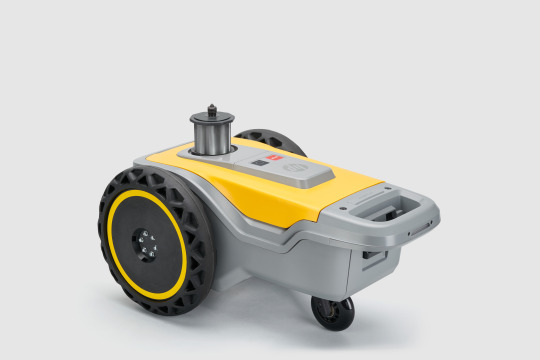
View On WordPress
#advanced robotics#Australia launch#autonomous robots#building layout#CAD integration#cloud tools#construction accuracy#construction challenges#construction efficiency#construction growth#construction innovation#construction management#construction sector#construction sites#construction software#construction solutions#construction technology#digital construction#digital layout tools#erasable inks#global availability#global construction#high productivity#HP Inc#HP robotics#HP SitePrint#interchangeable inks#layout automation#layout precision#obstacle avoidance
1 note
·
View note
Text
CAD Automation: Redefining the Design Landscape for Success
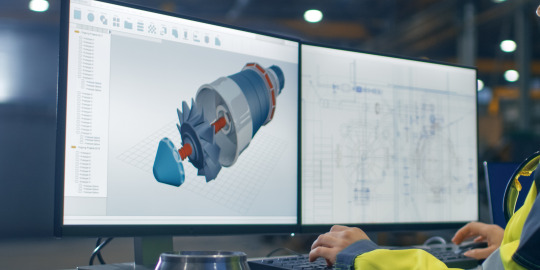
In the world of modern engineering and design, Computer-Aided Design (CAD) has revolutionized the way products are conceived, developed, and manufactured. As technology continues to advance, CAD automation emerges as a key player in enhancing design efficiency and fostering innovation. This blog post delves into the realm of CAD automation, exploring its significance, benefits, challenges, and potential future trends.
Understanding CAD Automation
CAD automation refers to the process of utilizing software tools and scripts to streamline various aspects of the design process. It involves automating repetitive tasks, generating complex designs, and facilitating seamless collaboration between designers and engineers. The goal of CAD automation is to reduce manual effort, minimize errors, improve consistency, and accelerate the overall design cycle.
Significance of CAD Automation
1. Efficiency Enhancement:
Automating routine and time-consuming tasks, such as dimensioning, detailing, and generating drawings, allows designers and engineers to allocate more time to creative and high-value tasks. This not only accelerates the design process but also increases productivity and reduces the risk of human errors.
2. Design Iteration and Optimization:
Automation tools enable rapid design iteration. Designers can easily generate variations of a concept, test different parameters, and evaluate multiple scenarios. This iterative process aids in identifying the most optimal design solution and fosters innovation.
3. Consistency and Standardization:
CAD automation enforces design standards and guidelines consistently across projects. This ensures that designs adhere to industry best practices and regulatory requirements, reducing the chances of errors caused by deviations from standards.
4. Complex Geometry and Customization:
Automated scripts and parametric modeling techniques enable the creation of intricate and complex geometries that might be challenging to achieve manually. Additionally, automation allows for easy customization of designs to meet specific customer requirements.
5. Collaboration and Communication:
CAD automation tools facilitate seamless collaboration between cross-functional teams. Design modifications, updates, and feedback can be efficiently communicated and integrated into the design process, enhancing teamwork and reducing communication gaps.
Benefits of CAD Automation
1. Time Savings:
Automating repetitive tasks drastically reduces the time required for design and drafting. This leads to faster project completion and quicker time-to-market for products.
2. Error Reduction:
Human errors are inevitable in manual tasks, but automation significantly reduces the risk. Consistent and standardized designs generated by automation tools mitigate the chances of costly mistakes.
3. Innovation Encouragement:
By handling routine tasks, designers can focus on exploring innovative design concepts and pushing boundaries. This results in more creative and inventive solutions.
4. Cost Efficiency:
Efficient design processes translate to cost savings. Reduced design time, fewer errors, and optimized designs contribute to lower production costs.
5. Enhanced Quality:
Automation tools ensure that designs adhere to defined standards, leading to higher-quality outputs that meet or exceed customer expectations.
Challenges of CAD Automation
While CAD automation offers numerous benefits, it's important to acknowledge the challenges that come with its implementation:
1. Initial Setup Complexity:
Developing and implementing automation scripts requires specialized skills and time. Setting up an automation workflow can be complex and resource-intensive.
2. Maintenance and Updates:
Automation workflows need continuous monitoring and updates to remain effective. Changes in design requirements or software updates may necessitate adjustments to the automation process.
3. Skill Requirements:
CAD automation demands a certain level of programming and scripting skills. Not all design professionals possess these skills, which might lead to a skill gap within the team.
4. Balancing Automation and Creativity:
While automation improves efficiency, there's a concern that excessive automation might stifle creativity. Striking the right balance is crucial to ensure that designers still have the freedom to innovate.
Future Trends in CAD Automation
The future of CAD automation holds exciting possibilities:
1. AI-Powered Design Generation:
Artificial Intelligence (AI) could play a significant role in generating design concepts based on user inputs and requirements. This could lead to the rapid creation of diverse design options.
2. Cloud-Based Collaboration:
Collaboration tools and CAD software are likely to move towards the cloud, enabling real-time collaboration between team members regardless of their geographical location.
3. Integration with Simulation and Analysis:
Automation could seamlessly integrate design with simulation and analysis tools, allowing for quicker evaluation of design performance and optimization.
4. Generative Design Evolution:
Generative design algorithms, driven by AI, could become more advanced, producing complex designs that consider multiple variables and constraints.
Conclusion
CAD automation is transforming the design landscape by freeing designers from repetitive tasks, empowering them to innovate, and enhancing design efficiency. While challenges exist, the benefits of CAD automation outweigh the drawbacks, and the continuous evolution of technology promises even greater possibilities in the future. Embracing CAD automation can position design teams at the forefront of innovation and efficiency in the rapidly evolving engineering and manufacturing industries.
ProtoTech Solutions' journey into the realm of CAD automation is a testament to the transformative power of technology. Their commitment to streamlining design processes, fostering innovation, and embracing the future sets an inspiring example for the entire design and engineering community. As ProtoTech Solutions continues to pioneer advancements in CAD automation, the design landscape stands poised for a future of unprecedented efficiency, creativity, and collaboration.
#CAD Automation#Design Efficiency#Design Workflow#Engineering Automation#Automation Solutions#Design Technology#AI-driven Design#Design Optimization#CAD Integration#Design Standards#CAD Software#CAD Customization
0 notes
Text
Neue Online-Plattformen bieten spezialisierte KI-Weiterbildungen für das Gesundheitswesen an
Die Digitalisierung des Gesundheitswesens schreitet unaufhaltsam voran, und Künstliche Intelligenz (KI) spielt dabei eine Schlüsselrolle. Um den wachsenden Anforderungen an Fachkräfte im Gesundheitswesen gerecht zu werden, entstehen immer mehr spezialisierte Online-Plattformen, die gezielte Weiterbildungsangebote im Bereich KI bereitstellen. Diese innovativen Lernformate bieten den Mitarbeitenden…
#Algorithmen#Augmented Reality#Augmented Reality (AR)#CAD#Digitalisierung#EdTech#Gesundheitswesen#Integration#Intelligenz#KI#Künstliche Intelligenz#Lernplattformen#Medizin#Medtech#Online-Kurse#SEM#Verantwortung#Virtual Reality (VR)#Webinare
0 notes
Text

🐔 or 🥚❓


Missile 🚀


ATV 🛺


Anti-flood Drone(redux)


Automaton 🤖
0 notes
Text
Revolutionizing Industries with Advanced Robotic Services
In recent years, there has been a significant shift towards automation and robotics in various industries. From manufacturing to healthcare, robotics technology has been continually advancing, providing more efficient and cost-effective solutions for businesses worldwide. At Systray Technologies, we are at the forefront of this technological revolution, offering cutting-edge Advanced Robotic Services that are revolutionizing industries.
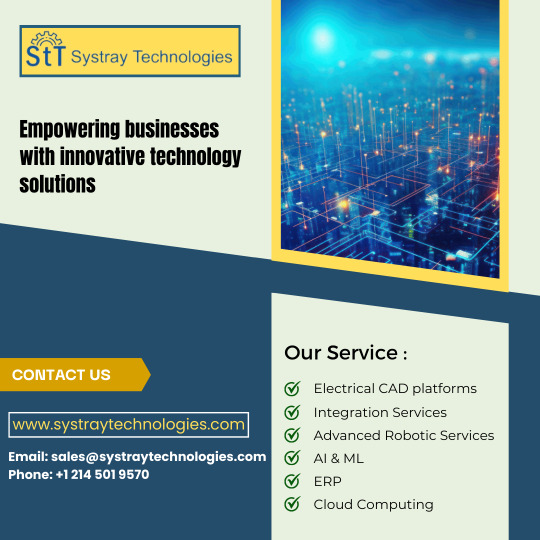
Our Advanced Robotic Services are designed to streamline processes, increase productivity, and improve overall operational efficiency. By integrating robotics into various aspects of your business, you can automate repetitive tasks, reduce human error, and ultimately enhance the quality of your products or services.
One of the key benefits of our Advanced Robotic Services is the ability to adapt to a wide range of industries and applications. Whether you are looking to optimize your production line, improve precision in the medical field, or enhance safety in hazardous environments, our robotic solutions can be customized to meet your specific needs.
In addition to efficiency and productivity gains, incorporating robotics into your business operations can also lead to cost savings in the long run. By reducing labor costs and minimizing waste, you can improve your bottom line and gain a competitive edge in the market.
Moreover, our Advanced Robotic Services can help improve workplace safety by taking on hazardous or repetitive tasks that may pose a risk to human workers. This can not only reduce the likelihood of workplace accidents but also boost employee morale and satisfaction.
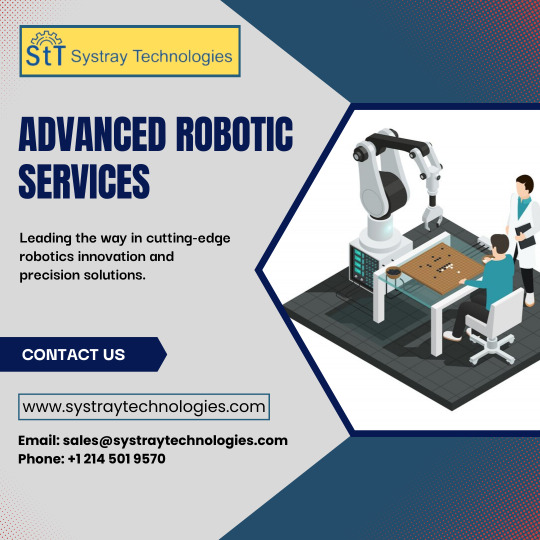
Furthermore, our robotics technology is constantly evolving, with ongoing research and development to ensure that we are at the forefront of innovation in the field. This means that our clients can benefit from the latest advancements in robotics technology, staying ahead of the curve and future-proofing their businesses.
At Systray Technologies, we understand the importance of staying ahead of the competition and embracing new technologies to drive business growth. Our Advanced Robotic Services are tailored to help businesses of all sizes and industries realize their full potential, optimize their operations, and achieve their goals.
For More Details:
Email: [email protected] Phone: +1 214 501 9570
#Electrical CAD platforms#Integration Services#Advanced Robotic Services#AI & ML#ERP#Cloud Computing
1 note
·
View note
Text


Wing-chair by Range Murata Fa Documenta - 001+002 Collection Catalouge
"This item was the first challenge in the furniture genre. It was designed using CAD drawings and CG simulations and even involved overseas production. Although it is inspired by the wings of an airplane, the integration of wood and iron, as well as the functionality and structure of reclining, are extremely complex. Currently, we are looking for manufacturers capable of solving these challenges."
126 notes
·
View notes
Text
Yuri VN/Game Tourney S2: Finals: Runner-Up




Info and propaganda under the cut! Not guaranteed to be spoiler-free
Love Angel Syndrome:
Description/Propaganda: a shut-in girl with no self esteem finds a link to download an AI assistant of her favourite anime character. however, this AI seems especially advanced, and is perhaps even falling in love with her!? (and she's a yandere!)
Content Warnings/Other info: Psychological Horror. Available for free on itch.io
soundless
Description/Propaganda: a horror/denpa story featuring a girl who is denied all connection. this description does NOT do it justice it's one of the submitter's favorite visual novels of all time
Content Warnings/Other Info: extreme bullying, abuse, and violence; religious cult; abusive relationship; protagonist who experiences delusions. Available for free on itch.io (Windows, Mac, Linux, Android)
Contract Demon:
Description/Propaganda: a strange angel girl who love demons summons a demon and they fall in love... short but sweet kinetic novel
Content Warnings/Other Info: No content warnings submitted. Available for free on itch.io (windows, mac, linux)
Fatal Twelve
Description/Propaganda:
not sure if it counts as strictly yuri (there's m/f in the supporting cast i believe) but the romance between the female mc and her friend is an absolutely integral part of the plot.
it's a death game type of story, but it's uniquely sympathetic to all its characters. the premise stands out from the rest of its genre in that all participants have died already, but had their deaths temporarily reversed by the goddess. when a participant is eliminated, their death occurs as it did before her intervention, and the winner of the game gets to be permanently revived by her.
you will probably cry. i think about mishima miharu a lot she is a miserable lesbian and i want her to be happy
Content Warnings/Other Info: major warning for death. there's also suicidal ideation and i believe past sexual abuse is discussed. Available on Switch, Steam, PS4, and GOG (Windows, Mac, Linux) for $25.99 CAD ($53.19 on Switch)
16 notes
·
View notes
Note
If you are going to make a game here’s some things that might be helpful!
Game engines:
Godot: very new dev friendly and it’s free. Has its own programming language (GDscript) but also supports C#. It’s best for 2D games but it can do 3D also.
Unity: I don’t even know if I should be recommending Unity. It has caused me much pain and the suffering. But Unity has an incredible amount of guides and tutorials. And once you get the hang of something it’s hard to get caught on the same thing again. It also has a great Visual Studio integration and uses C#. I will warn you the unity animator is where all dreams go to die. It’s a tedious process but you can probably get some plugins to help with that.
Unreal: Don’t use it unless you’re building a very large or very detailed 3D game. It also uses C++ which is hell.
Renpy: Made for visual novels but has support for small mini games. It only supports Python iirc. Basically if you’re making a VN it’s renpy all the way otherwise you should look elsewhere.
What to learn: Game design and how to act as your own game designer. As a designer you need to know if a part of your game isn’t meshing with the rest of it and be willing to give up that part if needed. Also sound design is very important as well. If you want to make your own sounds audacity is perfect for recording and cutting up your clips. If you want to find sound effects I recommend freesound.org and the YouTube royalty free music database.
Sadly I can’t recommend a lot of places to learn this stuff because I’m taking Game Development in Uni. So most of my info comes from my lectures and stuff. One of my game design textbooks is pretty good but it’s around $40 CAD. It’s called the game designers playbook by Samantha Stahlke and Pejman Mirza-Babaei if you’re interested (fun fact there’s a photo of Toriel in there)
Anyway sorry for dumping this large ask on you I’m just really passionate about game design and I like to see other people get into it.
please do not apologize I'd never heard half of this stuff so this is super useful!! I've seen some godot tutorials on YouTube although so far I've played around with RPG maker MV (it was on sale. very very fiddly interface, i had trouble getting around it) and gamemaker, which recently became free for non-commercial use (a lot more approachable on first impact but like i said, haven't really done anything substantial in either yet).
mostly, I'm still in the super vague stage. I've got an idea for the main story conflict, the protagonist and their foil, the general aesthetic i want to go for (likely 2D graphics, but it would be cool to make like. small cutscenes in low-poly 3D) but not much else. haven't exactly decided on the gameplay either! it's gonna necessarily be rpg-esque, but I'm not much of a fan of classic turn-based combat so. I'm gonna check out other games and see if i can frankenstein anything cooler :P
#like for example. if i were ever to make a daemo game (knock on wood) i was thinking that it would work out quite well#if i made it a PUZZLE rpg kind if game. since the player character is no longer frisk/chara/connected to the player#and daemo doesn't really have any reason to 1) be possessed or 2) go on murderous rampages#so with a base game like undertale where those ARE crucial parts of player-world interaction I'd have to redirect it elsewhere#it being player input in the story#but I'm not sure puzzles are quite the solutions for this other story....... we'll see#answered asks#SAVE point#thank you so much!
83 notes
·
View notes
Text
Unveiling the Power of 3D Visualization: Revolutionizing Engineering Applications
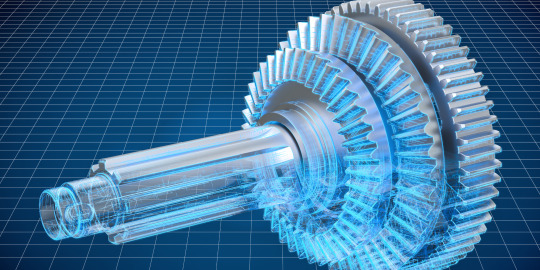
In the world of engineering, complex concepts and intricate designs often require effective means of communication to convey ideas, identify potential issues, and foster innovation. 3D visualization has emerged as a powerful tool that not only aids in comprehending intricate engineering concepts but also fuels creativity and enhances collaboration among multidisciplinary teams. This blog dives deep into the realm of 3D visualization for engineering applications, exploring its benefits, applications, and the technologies driving its evolution.
The Power of 3D Visualization
1. Enhanced Understanding: Traditional 2D drawings and diagrams can sometimes fall short in capturing the full complexity of engineering designs. 3D visualization empowers engineers, architects, and designers to create realistic and immersive representations of their ideas. This level of detail allows stakeholders to grasp concepts more easily and make informed decisions.
2. Identification of Design Flaws: One of the primary advantages of 3D visualization is its ability to identify potential design flaws before physical prototyping begins. Engineers can simulate real-world conditions, test stress points, and analyze the behavior of components in various scenarios. This process saves both time and resources that would have been wasted on rectifying issues post-construction.
3. Efficient Communication: When working on multidisciplinary projects, effective communication is essential. 3D visualization simplifies the sharing of ideas by presenting a clear visual representation of the design. This reduces the chances of misinterpretation and encourages productive discussions among team members from diverse backgrounds.
4. Innovation and Creativity: 3D visualization fosters creativity by enabling engineers to experiment with different design variations quickly. This flexibility encourages out-of-the-box thinking and exploration of unconventional ideas, leading to innovative solutions that might not have been considered otherwise.
5. Client Engagement: For projects involving clients or stakeholders who might not have technical expertise, 3D visualization serves as a bridge between complex engineering concepts and layman understanding. Clients can visualize the final product, making it easier to align their expectations with the project's goals.
Applications of 3D Visualization in Engineering
1. Architectural Visualization: In architectural engineering, 3D visualization brings blueprints to life, allowing architects to present realistic walkthroughs of structures before construction. This helps clients visualize the final appearance and make informed decisions about design elements.
2. Product Design and Prototyping: Engineers can use 3D visualization to create virtual prototypes of products, enabling them to analyze the functionality, ergonomics, and aesthetics. This process accelerates the design iteration phase and reduces the number of physical prototypes required.
3. Mechanical Engineering: For mechanical systems, 3D visualization aids in simulating motion, stress analysis, and assembly processes. Engineers can identify interferences, optimize part arrangements, and predict system behavior under different conditions.
4. Civil Engineering and Infrastructure Projects: From bridges to roadways, 3D visualization facilitates the planning and execution of large-scale infrastructure projects. Engineers can simulate traffic flow, assess environmental impacts, and optimize structural design for safety and efficiency.
5. Aerospace and Automotive Engineering: In these industries, intricate designs and high-performance requirements demand rigorous testing. 3D visualization allows engineers to simulate aerodynamics, structural integrity, and other critical factors before manufacturing.
Technologies Driving 3D Visualization
1. Computer-Aided Design (CAD): CAD software forms the foundation of 3D visualization. It enables engineers to create detailed digital models of components and systems. Modern CAD tools offer parametric design, enabling quick modifications and iterative design processes.
2. Virtual Reality (VR) and Augmented Reality (AR): VR and AR technologies enhance the immersive experience of 3D visualization. VR headsets enable users to step into a digital environment, while AR overlays digital content onto the real world, making it ideal for on-site inspections and maintenance tasks.
3. Simulation Software: Simulation tools allow engineers to analyze how a design will behave under various conditions. Finite element analysis (FEA) and computational fluid dynamics (CFD) simulations help predict stress, heat transfer, and fluid flow, enabling design optimization.
4. Rendering Engines: Rendering engines create photorealistic images from 3D models, enhancing visualization quality. These engines simulate lighting, materials, and textures, providing a lifelike representation of the design.
Future Trends and Challenges
As technology evolves, so will the field of 3D visualization for engineering applications. Here are some anticipated trends and challenges:
1. Real-time Collaboration: With the rise of cloud-based tools, engineers worldwide can collaborate on 3D models in real time. This facilitates global teamwork and accelerates project timelines.
2. Artificial Intelligence (AI) Integration: AI could enhance 3D visualization by automating design tasks, predicting failure points, and generating design alternatives based on predefined criteria.
3. Data Integration: Integrating real-time data from sensors and IoT devices into 3D models will enable engineers to monitor performance, identify anomalies, and implement preventive maintenance strategies.
4. Ethical Considerations: As 3D visualization tools become more sophisticated, ethical concerns might arise regarding the potential misuse of manipulated visualizations to deceive stakeholders or obscure design flaws.
In conclusion, 3D visualization is transforming the engineering landscape by enhancing understanding, fostering collaboration, and driving innovation. From architectural marvels to cutting-edge technological advancements, 3D visualization empowers engineers to push the boundaries of what is possible. As technology continues to advance, the future of engineering will undoubtedly be shaped by the dynamic capabilities of 3D visualization.
#3D Visualization#Engineering Visualization#CAD Software#Virtual Reality (VR)#Augmented Reality (AR)#Design Innovation#Visualization Tools#Product Design#Architectural Visualization#Mechanical Engineering#Civil Engineering#Aerospace Engineering#Automotive Engineering#Data Integration#Real-time Visualization#Engineering Trends#Visualization Technologies#Design Optimization
1 note
·
View note
Text
The Importance of Proper Academic Conduct
Word count: ~5k
In which Rook recounts a misadventure of his youth, Emmrich gets a little flustered, and nothing in particular actually happens.
Link here.
Look, I am entirely new to this and have no idea what I'm doing but I typed some words and after weeks of tweaking sentences entirely unnecessarily (usually making them worse) I have just put it up on ao3.
Snippet below:
"You see, the Tevinter history teacher was a real glory-of-the-empire sort. The kind who would refer to elves as a breed, who might hold his nose as I passed, who marked much more generously for any paper which endorsed his own views, irrespective of research or references.”
“The cad!” Emmrich cried before he could stop himself. He coughed, lightly, “To treat you such.”
Rook grinned indulgently, “And such disregard for the sacred art of research integrity and effective citation.”
Emmrich’s face was too red to effectively deny which infraction had triggered his outburst. He could see Neve and Harding poorly suppressing their laughter, but worse was the pity on Bellara’s face at his faux pas. Still, Rook’s grin at his discomfort stirred something else, which only deepened his mortification.
“Well, I…” he stammered, embarrassment rendering his mouth too dry for fluent speech.
“Unabashed racism is one thing,” Rook teased, mimicking Emmrich’s florid gestures with practised ease, “but I quite draw the line at bias in academic assessment.”
“Some of my star pupils have been elves!” Davrin had taken up the baton and was sprinting mercilessly through the field of his humiliation.
12 notes
·
View notes
Note
As I understand it you work in enterprise computer acquisitions?
TL;DR What's the general vibe for AI accelerating CPUs in the enterprise world for client compute?
Have you had any requests from your clients to help them upgrade their stuff to Core Ultra/Whateverthefuck Point with the NPUs? Or has the corporate world generally shown resistance rather than acquiescence to the wave of the future? I'm so sorry for phrasing it like that I had no idea how else to say that without using actual marketing buzzwords and also keeping it interesting to read.
I know in the enterprise, on-die neural acceleration has been ruining panties the world over (Korea's largest hyperscaler even opted for Intel Sapphire Rapids CPUs over Nvidia's Hopper GPUs due to poor supply and not super worth it for them specifically uplift in inference performance which was all that they really cared about), and I'm personally heavily enticed by the new NPU packing processors from both Team Red and Team We Finally Fucking Started Using Chiplets Are You Happy Now (though in large part for the integrated graphics). But I'm really curious to know, are actual corporate acquisitions folks scooping up the new AI-powered hotness to automagically blur giant pink dildos from the backgrounds of Zoom calls, or is it perceived more as a marketing fad at the moment (a situation I'm sure will change in the next year or so once OpenVINO finds footing outside of Audacity and fucking GIMP)?
So sorry for the extremely long, annoying, and tangent-laden ask, hope the TL;DR helps.
Ninety eight percent of our end users use their computers for email and browser stuff exclusively; the other two percent use CAD in relatively low-impact ways so none of them appear to give a shit about increasing their processing power in a really serious way.
Like, corporately speaking the heavy shit you're dealing with is going to be databases and math and computers are pretty good at dealing with those even on hardware from the nineties.
When Intel pitched the sapphire processors to us in May of 2023 the only discussion on AI was about improving performance for AI systems and deep learning applications, NOT using on-chip AI to speed things up.
The were discussing their "accelerators," not AI and in the webinar I attended it was mostly a conversation about the performance benefits of dynamic load balancing and talking about how different "acclerators" would redistribute processing power. This writeup from Intel in 2022 shows how little AI was part of the discussion for Sapphire Rapids.
In August of 2023, this was the marketing email for these processors:

So. Like. The processors are better. But AI is a marketing buzzword.
And yeah every business that I deal with has no use for the hot shit; we're still getting bronze and silver processors and having zero problems, though I work exclusively with businesses with under 500 employees.
Most of the demand that I see from my customers is "please can you help us limp this fifteen year old SAN along for another budget cycle?"
104 notes
·
View notes
Note
What other examples of "This is so fucking embarrasing. Leave me to perish" you have? Aside from Derek Craven of course 😅
IIIIIII have some!
Io: The Shrew/SM LaViolette—he's also a blusher who continuously keeps trying to shock this woman and is dismayed when he fails every time; he also humps her leg at one point
Master of Desire/Kinley MacGregor—warrior becomes reluctant guardian of a woman determined to have him, is scandalized by his own desire for her
The Gentle Art of Fortune Hunting/KJ Charles—local man is horrified that he would sell his integrity for the other guy's ass
Regarding the Duke/Grace Callaway—Mr. "I can only have sex with my wife once a week or else I'll submit to the mind-numbing bliss of that gorilla grip pussy and lose all my power"
The Wedding Witch/Erin Sterling—recluse warlock hires treasure hunter, ends up falling in love with her over text, highkey hates himself for it
Rules for a Proper Governess/Jennifer Ashley—another boss/employee situation except this time she's the street urchin he hired to manage his horrible children
Baron/Joanna Shupe—Mr. Big Rich Man Dismayed to Find Himself Attracted to Con Artist
Glitterland/Alexis Hall—pretentious flop author saddened by own susceptible to glittery boy he fucked one time
Managed/Kristen Callihan—the one where the uptight band manager falls for his platonic nap partner (also his employee sorta) and ends up shamefully masturbating while sniffing her dirty panties in their shared bathroom
Hotel of Secrets/Diana Biller—virgin secret agent is mortified to keep saving the bon vivant manager of a hotel he's staying in; gets hard after he almost dies during one of those situations
The Secret Service of Tea and Treason/India Holton—dual spies who are also nerds begin physical relationship that turns into love, both have ABSOLUTELY no idea what to do with that
Knockout/Sarah MacLean—this is a MacLean CLASSIC, but lol Tommy just... defines it
The Truth About Cads and Dukes/Elisa Braden—local duke is a crack shot and super efficient but loses his mind when the woman he agrees to marry breathes
American Royalty/Tracey Livesay—uptight professor prince is dismayed to find that the woman performing at the charity concert he agreed to host is in fact, not only a famous rapper and mogul but the hottest person on the planet
The Earl I Ruined by Scarlett Peckham—uptight earl falls for his best friend's little sister and is horrified with himself, also wants to spank her real bad (and she deserves it)
Unfit to Print by KJ Charles—just read this, childhood friends reunite to solve a mystery and one of them is a stern lawyer who not only hates how into the other one he is, but HAS NOT HAD SEX WITH A SINGLE PERSON SINCE THEY USED TO FOOL AROUND AT BOARDING SCHOOL
7 notes
·
View notes
Text
This is very interesting: a novel CAD package built on a text based file format that should allow you to check files into version control and automate tasks, plus a geometry engine optimized for GPU compute.
It's also got some noteworthy backers, the appeal of this is obvious to anyone who has ever tried to integrate CAD into a larger workflow, it takes a lot of manual shunting of files and tagging of releases and fighting with export formats, even with all the features SolidWorks and Inventor and SolidEdge have added over the years.
It's not parametric, of course, because that's a totally different approach to modelling that's much harder to automate this way. I'm not sure if that's reasonably possible without just doing SVG bullshit.
There's an LLM powered Text To CAD thing where you are meant to be able to just describe an object and get back the CAD for it but at least for now it can only do things that are relatively simple, it feels a little like a crutch to deal with how slow generating simple parts through code CAD can be. Defining an I-beam parametrically is the kind of thing you can do basically without thinking. I guess you'd probably want to have a library of parametrically defined common parts to pull from once you've been doing this for five minutes.
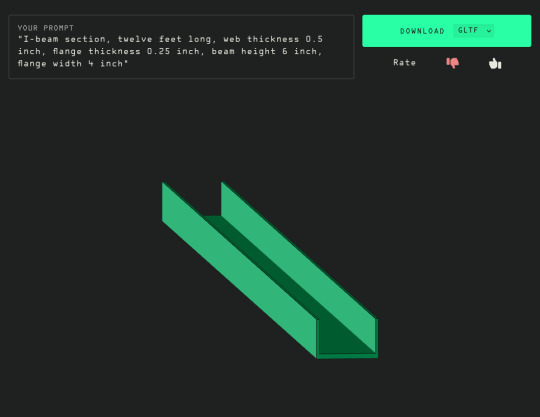
Close but no cigar! It does get the flange and web the right way around. Using inches because I assume it's trained in Freedomheit.
They're keeping their geometry solver closed source, but I'd be interested to see if declarative cad like this takes off in industry, it's a slow moving space but hardware design is increasingly available to startups and small businesses who might be willing to throw away a lot of old CAD philosophy.
A lot of industry uses constructive CAD like this, the US military has BRL-CAD. Never could get my head around it.
27 notes
·
View notes
Note
What kind of work can be done on a commodore 64 or those other old computers? The tech back then was extremely limited but I keep seeing portable IBMs and such for office guys.
I asked a handful of friends for good examples, and while this isn't an exhaustive list, it should give you a taste.
I'll lean into the Commodore 64 as a baseline for what era to hone in one, let's take a look at 1982 +/-5 years.
A C64 can do home finances, spreadsheets, word processing, some math programming, and all sorts of other other basic productivity work. Games were the big thing you bought a C64 for, but we're not talking about games here -- we're talking about work. I bought one that someone used to write and maintain a local user group newsletter on both a C64C and C128D for years, printing labels and letters with their own home equipment, mailing floppies full of software around, that sorta thing.
IBM PCs eventually became capable of handling computer aided design (CAD) work, along with a bunch of other standard productivity software. The famous AutoCAD was mostly used on this platform, but it began life on S-100 based systems from the 1970s.
Spreadsheets were a really big deal for some platforms. Visicalc was the killer app that the Apple II can credit its initial success with. Many other platforms had clones of Visicalc (and eventually ports) because it was groundbreaking to do that sort of list-based mathematical work so quickly, and so error-free. I can't forget to mention Lotus 1-2-3 on the IBM PC compatibles, a staple of offices for a long time before Microsoft Office dominance.
CP/M machines like Kaypro luggables were an inexpensive way of making a "portable" productivity box, handling some of the lighter tasks mentioned above (as they had no graphics functionality).
The TRS-80 Model 100 was able to do alot of computing (mostly word processing) on nothing but a few AA batteries. They were a staple of field correspondence for newspaper journalists because they had an integrated modem. They're little slabs of computer, but they're awesomely portable, and great for writing on the go. Everyone you hear going nuts over cyberdecks gets that because of the Model 100.
Centurion minicomputers were mostly doing finances and general ledger work for oil companies out of Texas, but were used for all sorts of other comparable work. They were multi-user systems, running several terminals and atleast one printer on one central database. These were not high-performance machines, but entire offices were built around them.
Tandy, Panasonic, Sharp, and other brands of pocket computers were used for things like portable math, credit, loan, etc. calculation for car dealerships. Aircraft calculations, replacing slide rules were one other application available on cassette. These went beyond what a standard pocket calculator could do without a whole lot of extra work.
Even something like the IBM 5340 with an incredibly limited amount of RAM but it could handle tracking a general ledger, accounts receivable, inventory management, storing service orders for your company. Small bank branches uses them because they had peripherals that could handle automatic reading of the magnetic ink used on checks. Boring stuff, but important stuff.
I haven't even mentioned Digital Equipment Corporation, Data General, or a dozen other manufacturers.
I'm curious which portable IBM you were referring to initially.
All of these examples are limited by today's standards, but these were considered standard or even top of the line machines at the time. If you write software to take advantage of the hardware you have, however limited, you can do a surprising amount of work on a computer of that era.
44 notes
·
View notes
Text

Adobe Creative Cloud Update: Meet Creative Cloud Pro, Unlimited AI, and Third-Party Integrations!
Adobe’s new Creative Cloud Pro plan launches June 17, 2025, with enhanced generative AI tools, third-party model integration (like OpenAI and Google), and a price bump to CAD $91.99/month. Users get unlimited standard AI features, 4,000 monthly premium credits, and upcoming access to the Firefly mobile app. Adobe also promises strong data privacy.
More here.
Subscribe to the podcast on Spotify, Apple Podcasts, or Amazon Music.
Follow WE AND THE COLOR on Facebook I Twitter I Pinterest I YouTube I Instagram I Reddit I ChatGPT I Podcast
3 notes
·
View notes
Text
How ERP Software for Engineering Companies Improves Operational Efficiency
In today's competitive market, engineering companies are under immense pressure to deliver innovative solutions, maintain cost-efficiency, and meet tight deadlines—all while ensuring the highest standards of quality. As the engineering industry becomes more complex and digitally driven, operational efficiency has become a key metric for success. One of the most transformative tools driving this change is ERP (Enterprise Resource Planning) software.

For companies seeking to streamline their operations, ERP software for engineering companies provides a centralized platform that integrates every function—ranging from procurement, design, production, finance, HR, and project management. In India, especially in industrial hubs like Delhi, the demand for such software is growing rapidly. Let us explore how ERP systems significantly enhance operational efficiency and why choosing the right ERP software company in India is vital for engineering enterprises.
Centralized Data Management: The Foundation of Efficiency
One of the major challenges engineering companies face is managing vast amounts of data across departments. Manual entries and siloed systems often lead to redundancies, errors, and miscommunication. With ERP software for engineering companies in India, organizations gain access to a unified database that connects all operational areas.
Real-time data availability ensures that everyone, from the design team to procurement and finance, is working with the latest information. This reduces rework, improves collaboration, and speeds up decision-making, thereby increasing efficiency.
Streamlined Project Management
Engineering projects involve numerous stages—from planning and design to execution and maintenance. Tracking timelines, resources, costs, and deliverables manually or via disparate systems often results in delays and budget overruns.
Modern engineering ERP software companies in Delhi provide robust project management modules that allow firms to plan, schedule, and monitor projects in real time. This includes milestone tracking, Gantt charts, resource allocation, and budget forecasting. Managers can gain visibility into bottlenecks early on and reallocate resources efficiently, ensuring timely delivery.
Automation of Core Processes
Automating routine tasks is one of the key advantages of implementing ERP software. From generating purchase orders and invoices to managing payroll and inventory, ERP eliminates the need for repetitive manual work. This not only saves time but also minimizes human error.
The best ERP software provider in India will offer customizable automation workflows tailored to the specific needs of engineering companies. For instance, when a material stock reaches a minimum threshold, the ERP system can automatically generate a requisition and notify the purchasing team. This ensures zero downtime due to material shortages.
Enhanced Resource Planning and Allocation
Resource planning is crucial in engineering projects where labour, materials, and machinery must be utilized efficiently. A good ERP software for engineering companies provides detailed insights into resource availability, utilization rates, and project requirements.
By analysing this data, companies can better allocate resources, avoid overbooking, and reduce idle time. This leads to significant cost savings and ensures optimal productivity across the board.
youtube
Integration with CAD and Design Tools
Many ERP solution providers in Delhi now offer integration with design and CAD software. This is particularly useful for engineering firms where design data is often needed for procurement, costing, and production.
When ERP is integrated with CAD, design changes automatically reflect across related departments. This seamless flow of information eliminates miscommunication and ensures that downstream processes such as procurement and manufacturing are aligned with the latest design specifications.
Real-time Cost and Budget Management
Keeping engineering projects within budget is a continuous challenge. Unexpected costs can arise at any stage, and without proper monitoring, they can spiral out of control. ERP software providers in India equip engineering companies with real-time budget tracking tools.
From initial cost estimation to actual expenditure, companies can monitor every aspect of the financials. Alerts can be configured for budget deviations, helping management take corrective action promptly. This financial control is a cornerstone of operational efficiency and long-term profitability.
Improved Compliance and Documentation
Engineering companies must adhere to various compliance standards, certifications, and audit requirements. Maintaining accurate documentation and audit trails is critical. ERP systems automate compliance tracking and generate necessary documentation on demand.
By partnering with trusted ERP software companies in Delhi, engineering firms can ensure they meet industry standards with minimal administrative overhead. Features like document versioning, digital signatures, and compliance checklists help organizations stay audit-ready at all times.
Scalable and Future-ready Solutions
One of the biggest advantages of working with a reputed engineering ERP software company in Delhi is access to scalable solutions. As engineering businesses grow, their operational complexities increase. Modern ERP systems are modular and scalable, allowing businesses to add new functionalities as needed without disrupting existing operations.
Moreover, cloud-based ERP solutions offer flexibility, remote access, and lower infrastructure costs. These are especially beneficial for engineering companies that operate across multiple locations or work on-site with clients.
Enhanced Customer Satisfaction
Efficient operations lead to improved delivery timelines, better quality products, and faster customer service—all of which directly impact customer satisfaction. With ERP, engineering companies can maintain accurate production schedules, meet delivery deadlines, and respond to customer queries with real-time information.
By choosing the right ERP software for engineering companies in India, firms not only improve internal operations but also build a strong reputation for reliability and professionalism among their clients.
Choosing the Right ERP Partner
With the growing number of ERP solution providers in India, selecting the right partner is crucial. Here are a few factors to consider:
Domain Expertise: Choose a vendor with experience in the engineering sector.
Customization: The software should be tailored to suit your specific workflows.
Scalability: Ensure the ERP solution grows with your business.
Support & Training: Opt for companies that provide ongoing support and employee training.
Integration Capabilities: Check whether the ERP can integrate with your existing systems, including CAD tools, financial software, etc.
Trusted ERP software companies in Delhi like Shantitechnology (STERP) stand out because they offer deep industry knowledge, scalable platforms, and dedicated customer support—making them ideal partners for engineering businesses seeking to transform operations.
youtube
Final Thoughts
In a rapidly evolving business landscape, engineering companies must adopt smart technologies to stay ahead. ERP software is not just an IT solution—it is a strategic tool that can redefine how engineering firms manage their projects, people, and performance.
From streamlining project workflows and automating routine tasks to enhancing collaboration and boosting resource efficiency, ERP solutions deliver measurable gains across the organization. For those looking to make a digital leap, partnering with a top-rated ERP software company in India can be the difference between stagnation and scalable success.
Looking for a reliable ERP partner? Shantitechnology (STERP) is among the leading ERP solution providers in Delhi, offering tailored ERP software for engineering companies to help you boost productivity, reduce costs, and grow sustainably. Contact us today to learn more!
#Engineering ERP software company#ERP software for engineering companies in India#ERP solution providers#ERP software for engineering companies#ERP software companies#ERP software providers in India#Gujarat#Maharashtra#Madhyapradesh#ERP solution providers in India#ERP for manufacturing company#Delhi#Hyderabad#ERP Software#Custom ERP#ERP software company#Manufacturing enterprise resource planning software#Bengaluru#ERP software company in India#Engineering ERP Software Company#Best ERP software provider in India#Manufacturing ERP software company#Manufacturing enterprise resource planning#ERP modules for manufacturing industry#Best ERP for manufacturing industry#India#Youtube
2 notes
·
View notes